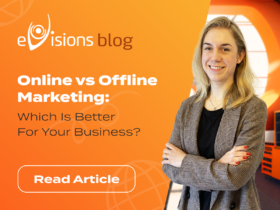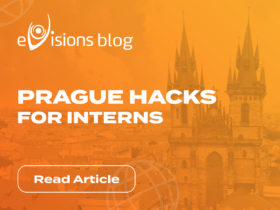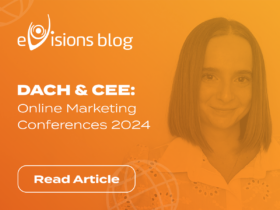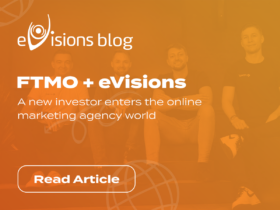Case study: How we got with MAN Truck & Bus Czech Republic the ball rolling on Facebook
26. 11. 2018 AutorHow to increase organic and viral FB page metrics comprehensively and long-term, even though the new algorithm goes against you? We used the new algorithm to our advantage for our client MAN Truck & Bus Czech Republic. We didn’t need to program bots or use other advanced technologies. We uncovered the real motives of the…
1. Organic reaches are falling, make a wish
Facebook has been really generous in 2018. Its belated Christmas present of a new Facebook algorithm put a dent in Facebook page admins’ budgets – literally.
The new algorithm has started to prioritise friends’ posts, which means that the organic reach of posts shared by business pages is declining month on month. Without paid advertising, FB pages today are practically stumbling.
But not all days are over. Let’s shine some light on Zuckerberg’s gift…
The sentence “You’ll see less public content like posts from businesses, brands, and media,” has raised every marketer’s heart rate. Let’s not be intimidated and instead read on.
“The public content you see more will be held to the same standard – it should encourage meaningful interactions between people. Facebook has always been about personal connections.”
Zuckerberg gave a straightforward recipe for a new algorithm, which we built our strategy on. Ultimately, this has delivered us long-term growth across all organic, and viral metrics tracked (engagement, reach, impressions).
2. There is no need for revolution at any cost
Many Social Media Specialists are pushing the envelope. They came up with revolutionary solutions from the beginning of their collaboration and wanted to make history with their campaign. These solutions have uncertain results and often entail tens of thousands of dollars in advertising costs.
On the other hand, why not. There are also case studies showing that this route can pay off. But there are brands, and especially target groups, that don’t require a non-standard solution for various reasons.
We decided to take the first route and focused on developing a comprehensive social media strategy. We built it on our fans, their motivations for engagement and quality community management.
3. Build your strategy on your fans
When we started managing this FB page, we didn’t get any Social Media strategy on a silver platter. We had to start working on it from the very beginning.
The main marketing objectives of our cooperation were and are:
- Building loyal relationships with target groups.
- Building a community around the MAN brand.
- Strengthening brand and product awareness.
- Information about new or innovative products/services.
- Building brand content.
We started by analysing previously shared posts and mapping the competition. Gradually, we got to the bottom of what content fans respond to most and refined our strategy. We also tested it face-to-face.
If you read carefully my colleague Dominik’s article called 8 tips how to outsmart the FB algorithm, he mentioned our marketing research for the client MAN right at the first point. We met with our fans personally, and believe me, no tool can give you such insight into your target audience.
The meeting reassured us that our seemingly simple strategy would work. On the one hand, our target group did not use or need to use significantly innovative technologies. They needed to share their passion for the brand, for the cars that are their home, for the work that often cost them their family relationships.
4. How to increase fan engagement? Use the COBRA concept to understand fans’ motives for engagement
In a rough version, we can distinguish three types of interactions: likes, comments and shares. We consider likes a more passive form of engagement – one click is a matter of microseconds while writing a comment requires much more effort and time.
Therefore, these metrics are worth evaluating separately, as they result from different types of engagement motivation from often different types of fans. This brings us to the concept of COBRA (Consumer Online Brand-Related Activity).
4.1 Three levels of fan engagement on social media
COBRA highlights 3 different levels of consumer engagement with a brand on social media (from lowest to highest):
- Consuming – the consumer/fan only consumes the content, e.g., watching a video or photo.
- Contributing – the consumer/fan contributes their likes or comments to posts shared by the FB page.
- Creating – the consumer/fan shares their own photos and videos, writes articles about the brand, etc.
4.2 Do you know what motivates your fans to get involved?
At the same time, the concept explores fans’ motivations for engagement (i.e., involvement). Five factors or motivators play a role: social aspects, desire for information, desire for fun, trust and reward.
On social media, the factors manifest themselves as follows:
- Social factors – by liking Facebook, the consumer becomes part of a community they identify with. At the same time, they want to make an impression on their surroundings or share their opinion or attitude. This factor is crucial for creating, i. e., creating (3rd and highest COBRA level), the so-called user-generated content.
- Desire for information – consumers consider social networks a trustworthy and relevant source of information (especially FB groups). Fulfil this desire and provide them with the information to convince them to buy. Or simply inspire them.
- Desire for fun – escape from reality, everyday problems, emotional relief, pleasure. The passion for entertainment is the primary motivation for consuming content on social networks, i. e., consuming (COBRA level 1).
- Trust – if consumers trust your brand’s communication on your FB page and other fans, you will increase their level of engagement.
- Reward – consumers want to learn about discounts, compete, in short, get some more tangible reward with their COBRAs.
4.3 Segment your fans and turn them into your “brand ambassadors”
Based on five different motivators, the level of engagement (consuming, contributing, creating) and the type of engagement (likes, comments, shares), we can divide fans into 4 groups:
4.3.1 Brand detached
These fans will consume your content, but youhave to ask them for likes. Don’t do it! Instead, serve them content that they will enjoy and through which you will build trust with them.
Feed them enough entertaining and emotionally-charged content. You’ll gradually get them interested in finding out more about the brand and eventually turn their consuming level into contributing.
4.3.2 Brand profiteers (“gold diggers”)
Another group of fans are the so-called brand profiteers. The goal of their COBRAs is to get some kind of benefit. Their motivation for joining is the reward and also the desire for information.
Offer them special deals, run a competition, invite them to a special event. They’ll be happy to share the offer, which means they’ll share the post with you. However, these fans won’t comment anymore.
And that is probably why the invitation to the Jičín fair had over 30 shares.
4.3.3 Brand companions
These fans react on their own initiative – they interact when posts amuse them or connect with other fans. The primary motivator is the social factor, which is also the driving force behind creating user-generated content.
These fans should be encouraged to share their opinions and their relationship with the brand. These fans are essential as they spread positive associations with the brand (in the best-case scenario, of course).
Don’t forget to return the effort. For example, in our case, by sending them a brand cap or sharing their own content to increase their social popularity.
4.3.4. Brand reliants/brand ambassadors
Finally – your VIP fans, the ones who respond to your every piece of content. They like, comment, share and sometimes send you a photo in a direct message. These fans are your brand ambassadors and deserve first-class care! They are the ones who have a profile picture with a MAN car.
We have marked our brand ambassadors as VIPs in Zoomsphere. And look one line above – what kind of label our fan Honza and many others have.
Our goal was, and still is, to turn fans who are brand detached, brand profiteers and brand companions into brand reliants, i. e., brand ambassadors, through the creation of valuable content appealing to the motives of the groups, along with a high level of corporate engagement (in posts and direct messages).
5. What goes around comes around – don’t forget the firm engagement
Social media communication is not just about sharing content, hoping that fans will respond to it. Brands that are very successful on social media are aware of the principle of the iceberg theory that only about 7% of all communication is done in a brand-community relationship. The other 93% of interactions are in the brand-fan relationship.
This relationship must be reflected in many other factors. Firstly, the social media marketing budget – you need to factor in that the time you spend on community management will be in the order of many hours. You need to set the right tone of voice and be prepared for all sorts of scenarios. For example, being able to advise when a fan is interested in renting a demo tractor, can’t find a jackscrew bar, or needs to run a PDF regeneration.
So that they know they can contact you when they buy a cap and that you will give them the contacts they need if they have a problem with their car. Because you are their friend who will entertain them, share their passion for MAN cars and help them in an emergency.
6. Results
Not only do we already have a few dozen VIP fans (brand ambassadors) whose names and profile pictures are remembered by our Social Media team, but above all, we have managed to create a community of MAN lovers (our fans would say Maňas or Maňaks – STEJNĚ JAKO V NĚMČINĚ, NEMÁM TUŠENÍ TAK TOTO PŘELOŽIT…) who actively share their feelings and attitudes towards the brand, photos from their travels, life stories.
We can now predict what type of content will generate hundreds of interactions and which ones we can (with exaggeration) count on the fingers of our social hands.
However, MAN Truck & Bus Czech Republic is the official page of an internationally known brand, not a FB group without regulated content. And the communication of big brands on social networks has its own rules that must be respected. And we only agree – where else would fans find information from inside MAN than on their official page? As we already know, just because they don’t respond to it doesn’t mean they don’t consume it. Especially our brand profiteers will surely appreciate them. 😊
6.1 Data analysis
We use Zoomsphere for the analysis. The data includes our 7 months of work on the project and is automatically compared to the previous 7 months. The data focuses on organic and viral metrics.
Organic metrics are achieved without the need for graduation. Viral metrics are created with the interaction of fans, where, e. g., sharing content gets the post to other users, also without the need for paid promotion.
Compared to previous months, fewer posts were shared. This means that increased organic and viral metrics is not due to increased posts (specifically 101 vs 145).
7. Conclusion
This case study may have reassured many FB admins eager for a revolution that is not coming. There is no need to push the envelope right from the start of the collaboration. Instead, focus on getting to know your target audience and their motives while developing a strategy. Highly nurturing fans and doing an excellent job over the long term will pay off.
We have no choice but to agree with our fans. We are delighted to be a support for such a great community!
Do you need advice on your social media marketing strategy? Contact us. Let’s have a coffee, and we’ll definitely come up with something together.










Komentáře